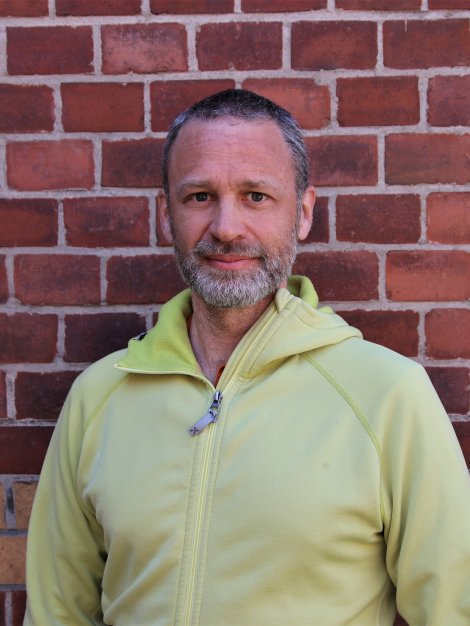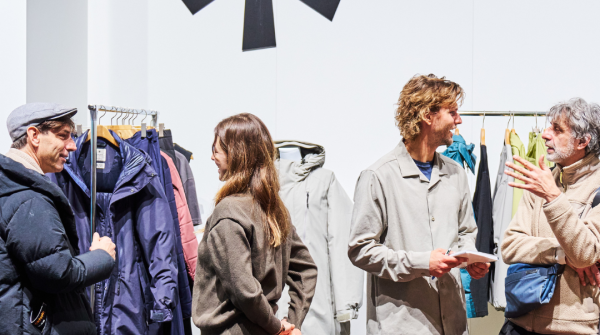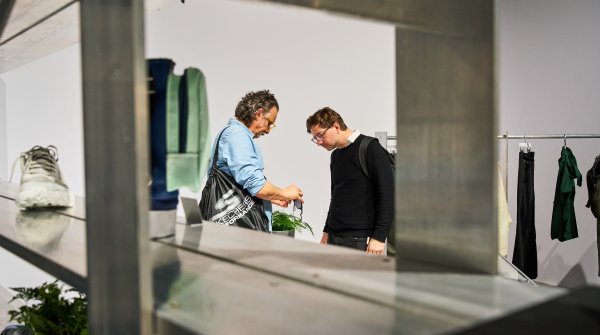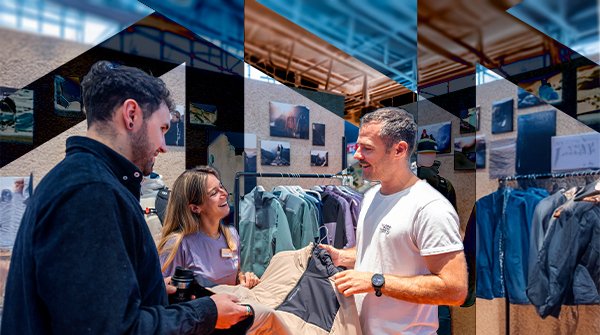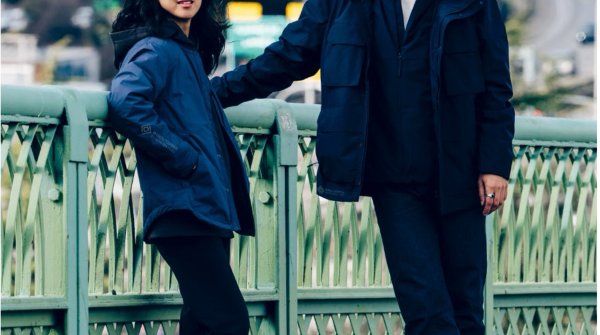About Icebug
Icebug is a Swedish footwear brand on a mission to empower people to get outside — regardless of the season. Founded in 2001, the company is best known for its innovative traction technologies, making it a go-to for runners, hikers, and outdoor lovers facing slippery or challenging terrain. As the first outdoor footwear brand to become climate positive, Icebug leads with bold sustainability actions, transparency, and a commitment to doing business differently. Headquartered in Jonsered, just outside Gothenburg, Icebug combines nature-first values with cutting-edge design and a deep respect for the planet.
- David, you want to increase mental health in your company with the help of mandatory „Wellness Hours“. How does that work?
- And three free working hours per week are the right way?
- Sounds like it’s way more than just doing sports together…
- What led you to the idea, what was the turning point?
- Pretty unusual for a CEO, isn’t it?
- Was there something that helped you during this process and inspired you to change?
- How did you integrate that awareness into the company?
- How did these 100 days look like?
- How did your employees react on the change?
- Have you ever had doubts or feared the risks of failing with this program?
- What is your resume after three years in the program?
- Would you say this was one of the boldest decisions you made in the past years?
- Do you think it's adaptable even for bigger companies?
- Could you maybe share an example where you really failed hard once?
- What was your learning from that?
- Are you really that optimistic? How do you see the future?
- Conclusion: Learnings for Sports Businesses
CEO David Ekelund believes this connection to nature is essential for both mental health and in-novative thinking. With mandatory “Wellness Hours” three times a week, all employees spend at least an hour outside — whether walking, running, or simply breathing fresh forest air. It’s part of a bigger shift: a commitment to inner development and new ways of working in a changing world. As Ekelund shares on a walk through the forests of Västra Götaland, breaking with business-as-usual has helped Icebug thrive — from the inside out.
David Ekelund (Icebug CEO): It's quite difficult to isolate where mental issues are coming from. Is it really because of work? Or can it be a parent who is ill or a child having problems at school? But it’s for sure, that you're not one person at work and then you're another person in your private life. We are basically one person.
The underlying assumption is, that people get more dusk worn down at work. They need the weekend or a vacation to rest. I think it's not a really good way of having it. What if instead, we can make the workplace the place where actual health and well-being are increased? Where people can develop towards their full potential.
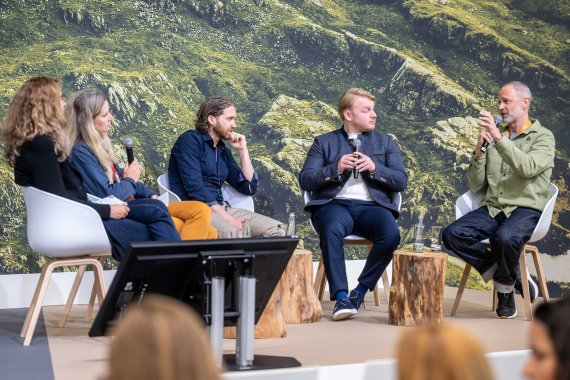
David Ekelund (Icebug CEO): We know that physical activity also gives mental well-being, but that's only one part of it. About 3 years ago, we decided that we wanted to work on inner development. This was really a departure from business as usual.
David Ekelund (Icebug CEO): The core idea of business as usual being professional at work. But we all have strong sides and weak sides. And if we go to work, spending a lot of time trying to hide our weak side and always show our strong side, our “better side”, we lose a lot of opportunities to learn. Instead spending a lot of energy doing that, we could use it to develop together.
David Ekelund (Icebug CEO): It happened during the spring of Covid, when me and a few others in leading positions were confronted with the weekly thrown up of the situation. It became clear to me, that I had an image for myself as a CEO, that I was trying to kind of execute to others. Like that only if I come up with the best plan and we just follow my plan, we're going to have a good outcome.
But during this time, I felt that if I would have tried to hang on to this, it would have broken me completely. So instead, I embraced vulnerability. Saying that I don't know what will happen, because things will likely keep changing a lot. But that I think we have the capacity to work on this together. This didn’t make me weaker, but stronger. And I also noticed that it unlocked the participating in joy at work for me and being able to express gratitude.
David Ekelund (Icebug CEO): Yes, until then I had this kind of underlying assumption that if things would be too joyful at work or if I would say thank you that maybe people would get lazy. But the effect is the contrary: People want to contribute more, if you show gratitude and approach things in a joyful manner, even pretty heavy things.
About David Ekelund
David Ekelund is the CEO and co-founder of Icebug, the Swedish outdoor brand leading the way in climate-positive footwear. At Icebug, he’s championed a workplace culture rooted in well-being, purpose, and bold sustainability goals. A regular speaker at ISPO, David shares his insights on transforming sustainable business through supply chain management for a massive reduce of emissions on the one hand and on the other how inner development and reconnecting with nature can help companies and people thrive.
David Ekelund (Icebug CEO): I had some coaching during this time and read a book which was very, very helpful to me. It's called “You are your best Thing”, written by Brené Brown. It led me to the conclusion, that I couldn’t change the situation, but I could try to change myself.
David Ekelund (Icebug CEO): We started thinking about how we can set up an environment that people get the chance to grow personally. There was this newly established framework called inner development codes, which is kind of a response to having global sustainable development goals: we basically know what to do, but in many cases, we're moving in the wrong direction. It's not that we lack knowledge, but we lack in the capabilities as humanity to move in the right direction and know what's actually good for us.
We had this framework with a definition of inner development goals, grouped in different themes like being, thinking, relating, collaborating and acting. Nobody had worked with it before, but we don't mind pioneering old trail blasting. So, we decided that we want to work through this framework with all the employees and basically kicked off in our teams for 100 days each.
David Ekelund (Icebug CEO): We already worked with an external facilitator for team development. She helped us working through those skills and capabilities to link them to some evidence. The most successful way of using the framework was finding something at work that you want to get better at. We have this principle at Icebug that nobody should only work with things in their workflows that they already know how to do. Everybody should always have something that they need to learn and stretch to.
That’s why we often have some situation where we would like to work better or feel better. And then you can try to link that to some helpful skill and a situation where you can practice this. We’ve established a one-hour reflection group every two weeks, where people across the company meet to share what they have tried, how it worked out und what they’ve learned or what has been useful or difficult.
David Ekelund (Icebug CEO): This development program is designed for people to find their own inner motivation. It was no surprise that there were some concerns and skepticism. But with the participation of everyone in the company, it was very helpful and good to question several parts of the program to grow together.
David Ekelund (Icebug CEO): I struggled a little bit with changing things, because I felt we were in a good state. I needed some logical motivation and asked the opposite of a positive outcome: What if people in the organization don’t grow and develop their inner compass, their integrity and authenticity? If they get worse at perspective taking, critical thinking, and sense making and lose their optimism in action? To me it’s pretty obvious that the organization would be a worse place to work. But if we get better at these things, we will also work better and increase the capabilities of the organization. That’s why I think it’s a much bigger risk to not try it, as the world around is changing, too.
David Ekelund (Icebug CEO): Today, almost all of our employees reached the recommended physical activity level from the World Health Organization. But my thing here is also the dare trusting in what I experienced. The trust that I feel in the organization. People are feeling much more secure at work and it became easier to address more difficult issues. We are much faster in collaborating around real problems that matter. That saves us a lot of time and energy at Icebug. And I also noticed that I became a more enjoyable partner and Dad.
David Ekelund (Icebug CEO): Maybe, yeah. I never really framed it that way for me personally. I think the boldest talk was when I did it myself first, I started opening up. And I didn't see that much risk in trying to do it for the company because we also were clear that, we wanted to try this.
It’s a complex program and we didn’t plan everything ahead. But we’re still finding our way and I think in that sense you decrease a lot of risk in decisions if you stay agile. If it doesn't work, we'll just abandon it and try to find a way forward.
David Ekelund (Icebug CEO): Sure, maybe not exactly how we do, but I think it’s doable and beneficial. There are big companies already working with inner development goals. IKEA is working quit a lot with it on leadership levels. But you can do it in smaller departments as well.
I know that there is some skepticism and worry, that this cannot spill into performance reviews and salary discussions. Whatever I share here or in the book we recently published about our journey, I think that you need this trust that learning and development is a good thing. You will see that people get less stressed and they are fine with sharing difficulties as well.
David Ekelund (Icebug CEO): We had our biggest problems with Cash flow issues that were kind of self-inflicted first time I think that we were we were growing. We had like 3 years when we grew an average of 35% and took for granted that we would keep growing. When that didn't happen, we ran into real cash flow problems. We had a similar scenario when we wanted to hit it up in North America and gave too much leeway to somebody leading that operation.
But profitability and growth somehow got missed. So we just had the growth and that was also. Quite and took some restructuring. I think a lot of that is is. I think our biggest failures has been when we have been too locked into growth earlier. So you do things to grow. Broader than growth as a result of doing the right things.
David Ekelund (Icebug CEO): I think as a company you have to stay very agile and have a high degree of resilience. You need cash reserves for not being too stretched. That’s one part.
And then the other more philosophical part we want to promote is the return of the virtue. Contribution and seeing what you can contribute, not looking at, just us getting what we could get. It's not that if somebody else wins that I automatically lose. A lot of people can win at the same time through collaboration.
Our role models are companies that do something for the common good. We want to do so, too, because I think that we’ll also benefit. If we all do a little bit more, the world will be a better place.
David Ekelund (Icebug CEO): We haven't maybe been as collaborative lately as we were before. But the outdoor industry has always been a strong community. We are trying to move the same things: to increase participation in sports or outdoor activity. The future we are looking for is where people can thrive on a planet in balance.
Being physically active and doing it together with others while connecting with nature increases people’s well-being. And that is where we have a real chance to be part of the solution. Also because we’re not such a big part of the problem. Yes, our industry does pollute and we need to take care of reducing our emissions. But the real imact we have is in moving people’s awareness for a sustainable future. Which is actually what to strive for because it will lead to more flourishing lives.
It's the wrong direction to just pick up pages from fashion playbooks and try to create trends and sell as much stuff as possible. The challenge for most CEOs is finding a plausible hypothesis and set business targets to prove that the company reaches them. But that triggers overconsumption and is not good for us. The challenge is to find a viable business model that contributes to people’s well-being. And flourishing life or nature on the planet as well.
With that in mind, how this can look in practice and how brands can implement it meaningfully is at the heart of ISPO 2025. Here, brands come together to exchange knowledge, build partnerships, and discover fresh ideas. Through focused talks, workshops, and networking events, you gain valuable tools to drive your business forward. Be part of it – 30. NOV. – 02. DEC. in Munich.
- Workplace as a Source of Health: Icebug envisions work not as a burden, but as a source of physical and mental well-being – with mandatory “Wellness Hours” outdoors.
- Fostering Inner Development: Instead of traditional performance metrics, Icebug focuses on personal growth within teams, guided by the “Inner Development Goals” framework.
- Leadership through Vulnerability: During the pandemic, Ekelund chose openness and collaborative problem-solving – a turning point in his role as CEO.
- Positive Company Culture: Trust, gratitude, and room for growth help employees feel more secure and work more effectively together.
- A Learning Organization: Regular reflection sessions and the principle of always learning something new enhance ownership and innovation.
- Sustainable Business Mindset: Icebug doesn’t chase growth for its own sake – it aims to contribute meaningfully to its team, the industry, and the planet.
- Outlook: Ekelund advocates for more collaboration and a business model that centers on human well-being and planetary health.
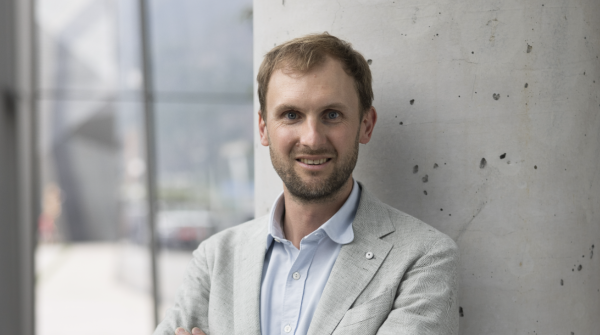
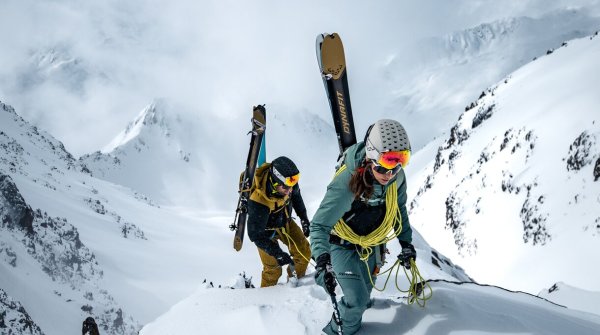 Sports BusinessSki Mountaineering Goes Olympic: What Milano-Cortina 2026 Means
Sports BusinessSki Mountaineering Goes Olympic: What Milano-Cortina 2026 Means
- ISPO awards
- Mountain sports
- Bike
- Design
- Retail
- Fitness
- Health
- ISPO Job Market
- ISPO Munich
- ISPO Shanghai
- Running
- Brands
- Sustainability
- Olympia
- OutDoor
- Promotion
- Sports Business
- ISPO Textrends
- Triathlon
- Water sports
- Winter sports
- eSports
- SportsTech
- OutDoor by ISPO
- Heroes
- Transformation
- Sport Fashion
- Urban Culture
- Challenges of a CEO
- Trade fairs
- Sports
- Find the Balance
- Product reviews
- Newsletter Exclusive Area
- Magazine
